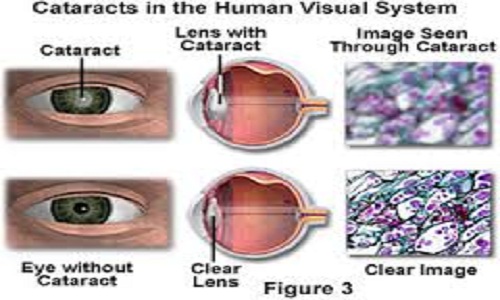25,597 total views, 1 views today
The human eye is the most important organ in the body. The eye serves as the king as nothing can be done easily without the eyes. Eyes are used mainly for sight. This delicate organ needs proper care and attention because its loss will throw a being into total darkness. Some people are born without sight while some develop sight defects over time. Some neonates lose their eyes due to pregnancy complications or diseases such as measles. ( Read an interesting article on 10 Reasons why you should do your Eye checkup here)
Symptoms of Eye and Vision Defect / Problem
Despite the fact that eye defects in children are difficult to notice, there are various ways of detecting sight and vision problems in children. Some of the eye defect symptoms include
- rubbing of the eyes
- squinting of the eyes
- sitting close to blackboards or television
- placing books close to the eyes when writing and reading
- watery eyes
- frequent blinking of the eyelids
- wandering eye
- shutting of eyelids in daylight
- the eyes turning red or any discomfort of the eyes.
All these serve as symptoms of eye defects, which need urgent medical attention. It is better to treat and correct eye defects early so as to avoid total blindness. Adults also experience all these above eye defects but it is easier for them to complain and notice the symptoms. A headache and eye pain are two important symptoms and effects of an eye problem. ( 7 Tips On How To Live a Healthy Life)
Different and Common Eye and Vision Defects in Humans and Their Solutions
The most popular and common eye defects include short-sightedness, long-sightedness, astigmatism, and cataract. These eye-defects are sometimes hereditary.
1. Short-Sightedness
This eye defect is also known as or called myopia or near-sightedness. People suffering from this eye defect see only near objects or distance but do not see far or distant objects. The inability to see far objects is because the image is formed in front of the retina rather than forming on it. The eyeballs of the victims are long. This defect can be corrected with concave or diverging lenses by making the image form on the retina. The victims of short-sightedness find it difficult to see lines( both horizontal and vertical) clearly. Correction and solution to this eye defect are made by prescribing concave lens to the patient. (Reasons Why You Can’t Sleep Well at Night and How to Solve It Naturally)
2. Long-Sightedness
This eye defect is also known as hypermetropia, hyperopia or far-sightedness. Here, the victim can only see far or long distance but cannot see short distance or close objects. In Long-sightedness the images are formed behind the retina instead of forming on it. The eyeballs of those suffer from hyperopia are small. Solution and correction to this eye defect are made with the use of convex or converging lenses. (How The Immune System of The Body Works)
3. Astigmatism
Astigmatism is the third common eye defects in humans. Here, the rays of light do not focus on the retina, where images are formed. Instead, some parts of the rays of light are focused in front of the retina while others are focused at the back. Astigmatism eye defect is corrected and solved by the use of a cylindrical lens. (Common Allergies; Causes, Triggers, Symptoms, and Treatment)
4. Presbyopia
This is the eye defect that is common among old people. Presbyopia is related to aging and seen mostly in people in their fifties. The ciliary muscles get weakened and the eye loses its accommodation ability. Presbyopia is an advanced form of hypermetropia where victims find it more difficult to see long distance and objects. Presbyopia eye defect can be solved and corrected by the use of reading glasses with convex lenses.
5. Cataract
Cataracts are caused by the cloudiness of the lens and might later result in total blindness. This defect of the eye can be caused by the change in the protein of the lens, eye injury, smoking, drinking or exposure of the eye to the ultraviolet sun rays. Cataracts are majorly removed and corrected through surgeries. (The Importance Of Food, Water, Sleep And Exercise To Your Health)
There are some cases where some people suffer from both myopia and hypermetropia. Those people are being prescribed bi-focal lenses. The bi-focal lenses comprise both the concave and convex lenses. Some eye defects can be corrected with medication or eye drops. Eyeglasses or contacts are used by many people with impaired vision. Some eye defects can be corrected within a short period of time while some are corrected over the years.
Please drop a comment
If you find this article interesting, please like us on Facebook and Twitter, you should also share it by clicking the buttons below to enable other people to benefit from it.

This is a good web site and it help alot
Thanks alot it really helps
Thanks a lot
Thanks alot the website really help alot
Thanks alot
It really really helps
This website really help.
Thanks alot